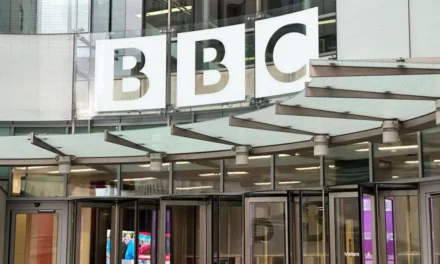How do we write using the audiovisual? Many of us are facing this challenge, frustrated by the restrictions of prose-only analyses. One answer is the audiovisual essay, in its poetic and analytic variants. These have recently taken off in the UK, especially in film studies, as a result of the significant loosening of copyright law, which now explicitly allows quotation of audiovisual works for the purposes of critical comment and review. Many users aim to create works which express their own responses to movies (a kind of latter-day Leavisite approach, perhaps). Others to use the visual to analyse the visual without recourse to words, exposing mise-en-scene to a critical and analytic gaze.
There’s a lively debate about what an audio-visual essay ‘really’ consists of, and a number of exciting sites in the UK, including Film Studies for Free. Catherine Grant’s recent presentation at a Learning on Screen conference is a really useful introduction to this. Nevertheless, this emerging practice strikes fear into the heart of many researchers, for two distinct reasons. The first is target-driven: “if I do this, how can I enter it for the REF?”, a REF that we all know has historically been uneasy with creative activity. The second is more immediate: for many people, it requires the acquisition of new skills and new software packages, guidance on which is surprisingly hard to come by in the academic setting. The time required, the work disciplines involved, and even the necessary working spaces are all different from the familiar requirements of delivering a 5000 word article to peer review… and that’s hard enough to do.
So there are significant blockages in developing the audiovisual essay. And it still remains a linear form. The overwhelming majority of audiovisual essays seem to be cast in the same mould as the works they analyse. You press play, start at the beginning and follow through. But there is also a need for hybrid forms which combine the flexibility of writing and reading (ability to scan blocks of text, move at different rates, move swiftly backwards and forwards, search for terms etc) with the ability to see and hear, to access the medium that is being analysed. That’s why it’s great to use a platform like this, or the rare online peer reviewed journals for television studies like VIEW. Yet it is surprising, in both cases, how little many contributors make of the potential on offer.
Perhaps that’s because, compared with the audiovisual essay, they provide a relatively primitive set of potentials: the ability to embed links to footage on public platforms like YouTube, or password protected ones like BoB. At least with BoB it has been easy for ages to set up the relevant clip. Now that’s possible with YouTube as well, with a relatively new app which allows the user to specify an in and out point which is then given a unique URL which can be embedded in an online document.
This has enabled me to present an analytic description of a 24 minute sequence showing a veteran 16mm film crew using the equipment of the early 1960s to set up an interview. Their work is a complex process involving six people and several items of equipment, all to get a simple talking head. The analysis is presented as pages of text with a screen which instantly displays any hyperlinked footage in it. It enables a simple prose read-through or a detailed engagement with how the crew work, as captured by our four cameras. A cut-down single screen edit is offered as a basic introduction to the account, and from then on, the material from all four cameras is presented in a single screen.
The material is very familiar to me. I was there when it was filmed, I have watched it many times. For someone coming to it afresh, there are significant problems with getting used to the four screen format. Two are from fixed positions, and two are the outputs of cameras moving within the scene, trying to capture significant actions. It is a fresh way of looking that many find, initially, to be disconcerting. I hope that the mixed sound should enable anyone to orient themselves to the particular incident referred to in the text, but that remains to be established. So I have no idea whether this actually works for a user, however, so all comments will be gratefully received. This is another experiment in the new adventure of presenting moving image and sound within our analyses of it.
It also should enable those with no experience of now-outmoded forms to production to understand how many decades worth of TV material was actually created. And to understand the work disciplines and often idiosyncratic equipment involved. And that is the aim of the ADAPT project for which this hands on history experiment was created.
I am grateful to Steph Janes who discovered both the YouTube app and the ‘sticky screen’ functionality in WordPress. Otherwise, I would still have been floundering about…
JOHN ELLIS is Professor of Media Arts at Royal Holloway University of London. He leads the ADAPT project on the history of technologies in TV, funded by a €1.6 million grant from the European Research Council. He is the author of Documentary: Witness and Self-revelation (Routledge 2011), TV FAQ (IB Tauris 2007), Seeing Things (IB Tauris 2000) and Visible Fictions (1984). Between 1982 and 1999 he was an independent producer of TV documentaries through Large Door Productions, working for Channel 4 and BBC. He is chair of the British Universities Film & Video Council and also oversees the Royal Holloway team working on EUscreen. His publications can be found HERE.




fascinating!